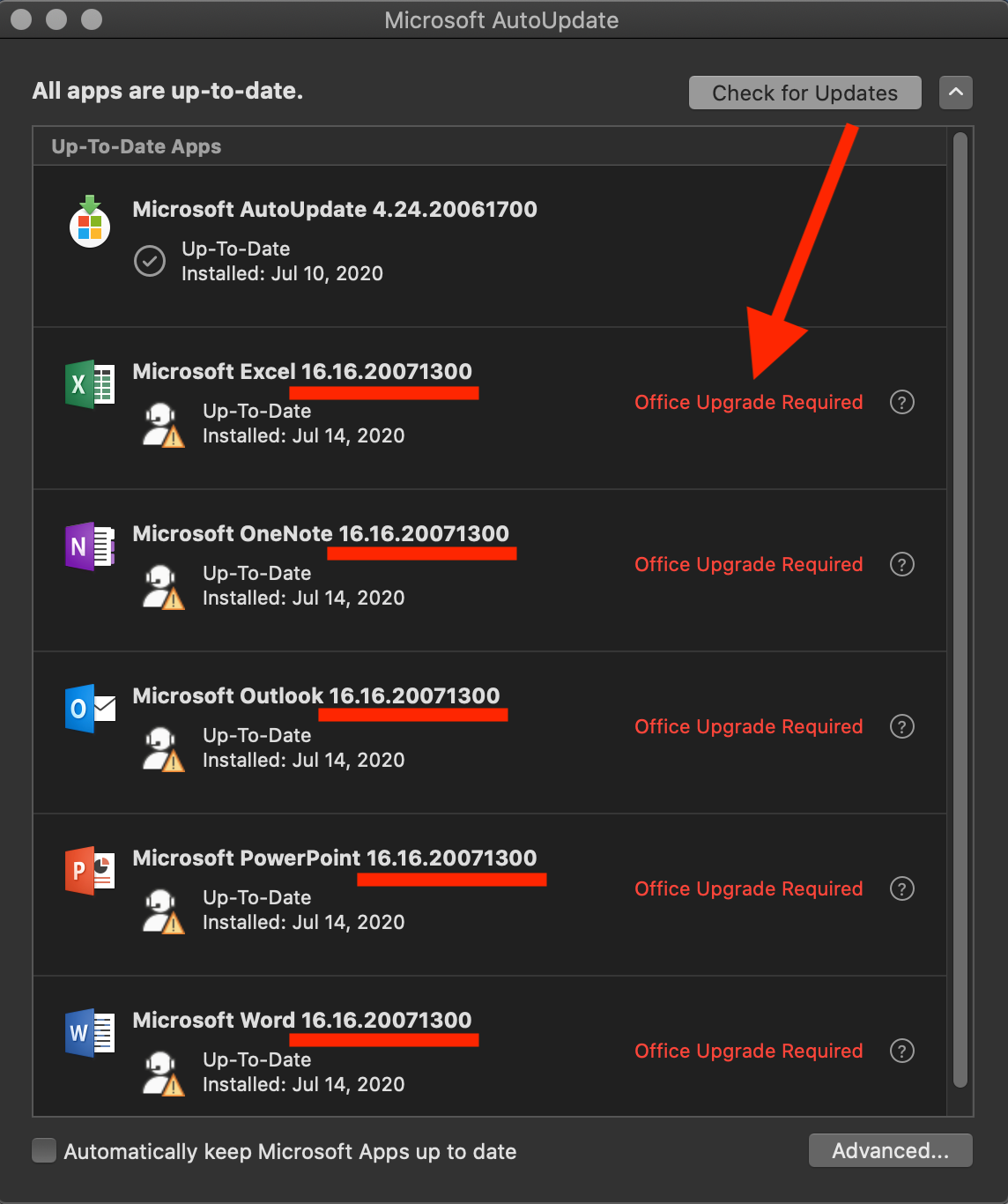
Taken together, these two facts mean it could be nearly impossible to run High Sierra with Office 2011 without significant problems - if it works at all. Not only is Microsoft ending support for Office 2011 for Mac, the new macOS High Sierra will not support 32-bit apps like Office 2011 “without compromises”, as their developers say. Making a shift can be a jarring transition, as users get used to keyboard shortcuts and the ability to collaborate with other Office users. With the Microsoft team dropping support for Office 2011, you do have several options for office productivity software such as upgrading to Office 365, moving to a new perpetual license version of Office 2016 or migrating to a new productivity platform completely. While these perpetual licenses are technically yours to use “forever”, there is a functional lifespan for each release.
Office for mac upgrade for mac#
If you’ve purchased a perpetual license version of Microsoft Office for Mac in the past, it may be time for an upgrade.
Office for mac upgrade install#
The popularity of cloud-based software and storage solutions makes this decision easier than ever - a clean install clears out any lingering after effects from previous software. Many users prefer to run a clean version of a new operating system and install from scratch, while others simply run the upgrade and hope for the best. If there are files behind your partition, you’ll want to transition those back to your core before removing the partition, too. If you’re already test-driving a beta version of High Sierra in a partition or otherwise, downloading the update is a snap.

The majority of Macs that are newer than 2010 are fully compatible with the new OS, making the free upgrade very attractive to users. The recently-released High Sierra OS has been in beta testing for several months now, giving users plenty of time to preview the new functionality.
Office for mac upgrade mac os#
This makes it particularly challenging when Microsoft decides to deprecate support for a particular version, as they are with Office 2011 for Mac for users who update to the new Mac OS 10.13, codenamed High Sierra. While Apple now has the power to encourage users to move in different directions for their office productivity software, the prevalence of Microsoft Office and Excel dictates that many Mac users still require access to a version of the platforms for their OS. While the early years may have been all about how Microsoft could support Apple’s vision, the current reality is quite different. The Mac to MS Office relationship has been rocky at best, which started decades ago with the competitive relationship between Steve Jobs and Bill Gates in the 1970s.

It may be no surprise that when you Google “MS Office for Mac”, that the majority of the results returned are alternatives to the popular office productivity software. Even Office 2016 users may encounter difficulties. Mac users of Microsoft Office 2011 may be in for a nasty shock after upgrading to High Sierra, as Microsoft has announced that it’s no longer supported.


 0 kommentar(er)
0 kommentar(er)
